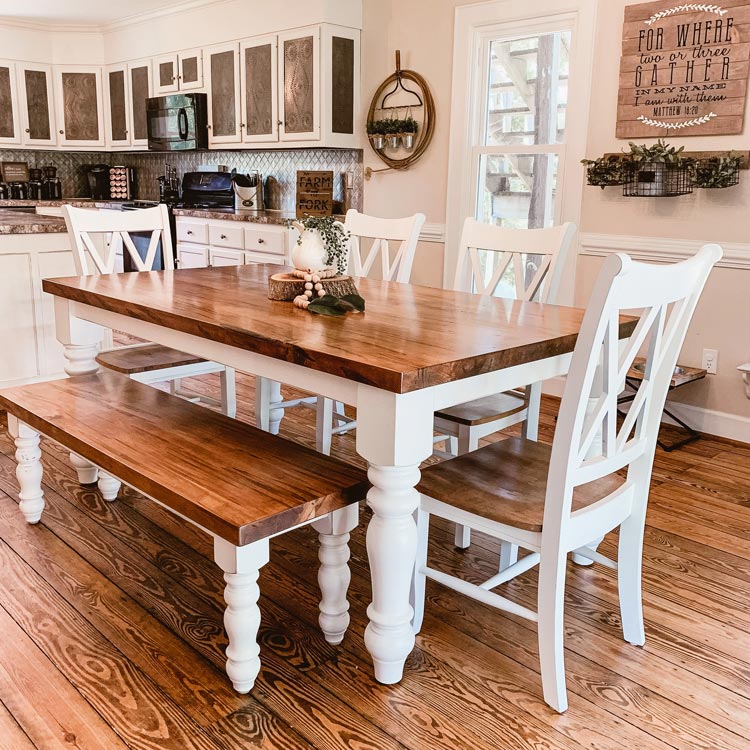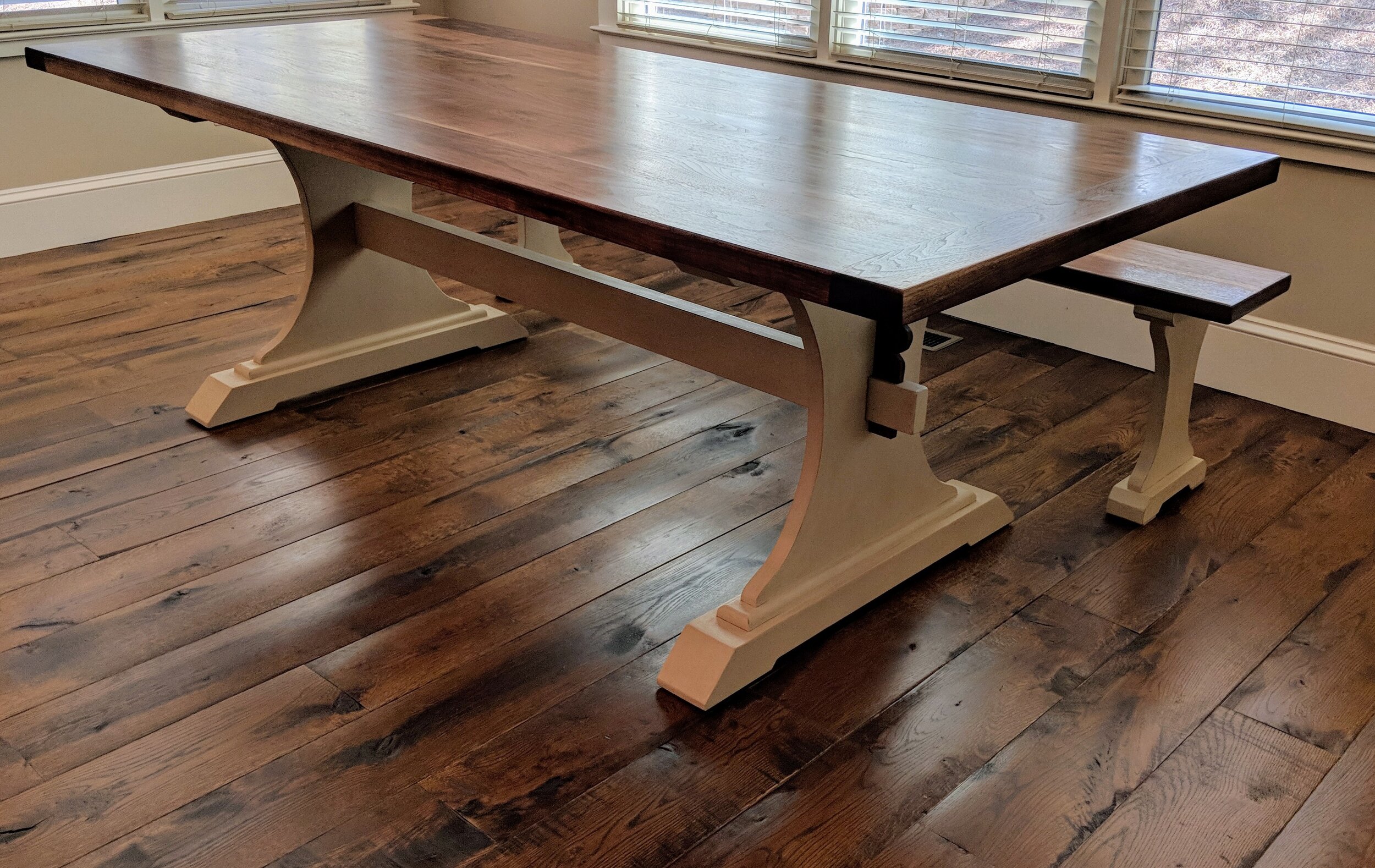Unique Dining Room Table Legs That Will Elevate Your Dining Area
Unique Dining Room Table Legs That Will Elevate Your Dining Area
Blog Article
Professional Tips for Putting Up Dining Room Table Legs for Maximum Stability
When it comes to installing dining room table legs, accomplishing maximum security is extremely important for both performance and aesthetics. The process starts with choosing the best materials and hardware, complied with by precise positioning and consideration of weight distribution. Each action plays an essential role in making certain that the finished product endures daily use without compromising safety or design honesty. Nonetheless, comprehending the nuances of these elements can substantially affect the general outcome. What certain strategies can improve stability even better?
Pick the Right Legs
When choosing the proper legs for your dining space table, it is vital to take into consideration both capability and aesthetic appeals. The legs you pick will significantly influence the overall layout and security of the table. First, assess the table's intended use; if you expect regular gatherings, stronger legs, such as those made from solid wood or steel, might be much more appropriate, as they use raised durability and support.
Next, think about the height and style of the legs in relationship to the tabletop. Basic table generally vary from 28 to 30 inches in elevation, so make sure the legs line up with this standard for comfort. The design of the legs need to enhance the style of the tabletop-- whether it be contemporary, rustic, or traditional. Tapered legs can add a modern touch, while turned legs may share a much more classic visual.

Select Appropriate Equipment
Just how can the best equipment enhance the stability and long life of your dining-room table? The option of appropriate hardware is essential to making sure that the legs of your table are firmly affixed and able to endure regular usage. Premium screws, screws, and braces supply the required stamina to sustain the weight of the table, along with any type of additional loads put upon it throughout dishes or celebrations.
When selecting screws, select those made from durable materials such as stainless steel or brass, which withstand deterioration and maintain integrity over time. The size of the screws is equally essential; they ought to permeate deeply right into the table's structure without compromising integrity. For bolted connections, take into consideration using lock washers to protect against loosening up due to resonance or activity.
Additionally, using edge braces can add added assistance, particularly for larger tables or those with larger tops. These braces disperse weight uniformly and help keep the table's form. Guaranteeing that the hardware you pick is proper for the certain materials of your table will certainly additionally boost its total stability and longevity, enabling you to enjoy your dining experience for several years to find.
Ensure Proper Positioning
Appropriate alignment of dining-room table legs is crucial for both visual appeal and functional security. Misaligned legs can lead to an unequal tabletop, which might not only be visually unattractive however also jeopardize the table's usability. To accomplish optimal placement, begin by determining the range from the table's corners to the leg attachment factors. This ensures that each leg is positioned equidistant from the sides, creating a well balanced appearance.
Make use of a level throughout setup to confirm that each leg is vertical to the table top. This action is important, as even small disparities can intensify into considerable security issues with time. It is a good idea to note the wanted leg settings on the bottom of the table with a pencil or concealing tape before protecting them. This method works as an aesthetic overview, permitting adjustments as required.
Furthermore, double-check the alignment after the first screws are tightened, as adjustments may be necessary prior to totally safeguarding the equipment. By focusing on proper alignment, you not only enhance the table's total design but also guarantee that it remains stable and useful for years to come.

Take Into Consideration Weight Distribution
After making certain correct positioning of the eating space table legs, it is necessary to think about weight distribution to boost stability and performance. dining room table legs. Proper weight circulation is important in avoiding wobbling and making sure that the table can sustain its designated load without threat of tipping or breaking down
When positioning the legs, ensure they are positioned at equal ranges from the center of the table to uniformly distribute the weight throughout the structure. Take into consideration the weight of the table top and any kind of products that will regularly rest on it, such as attractive items or tabletop home appliances. Tables with much heavier surface areas ought to preferably have legs located closer to the corners, as this takes full advantage of the base of support and reduces the threat of instability.
Additionally, if the table is intended for usage in a high-traffic area, Clicking Here think about using larger products for the legs or adding maintaining aspects, such as cross-bracing or a reduced shelf - dining room table legs. These modifications can assist maintain equilibrium and protect against shifting during usage. Inevitably, a well-considered weight circulation technique will dramatically boost the table's total efficiency, guaranteeing it remains a practical and attractive centerpiece for your dining area
Test Stability Before Use
Examining the security of the dining-room table before use is an essential action that needs to not be overlooked. Guaranteeing that the table is stable and secure can avoid accidents and extend the life expectancy of the furniture. Begin by applying mild pressure to various points on the table surface area. Lower on the facility and afterwards along the edges, moving or observing any type of wobbling. If the table shows instability, determine the legs or joints that may need adjustment.
Next, check that all screws and bolts are tightened up appropriately. Loose connections can bring about instability and possible damages gradually. If required, use timber glue on joints to improve stability, guaranteeing to allow adequate drying time.

Final Thought
To conclude, the setup of eating room table legs requires mindful factor to consider of materials, hardware, positioning, and weight circulation to attain maximum security. By selecting strong legs and premium bolts, making sure specific alignment, and distributing weight equally, the architectural integrity of the table can check this site out be substantially boosted. Performing a security test before normal usage even more ensures that the table will certainly stand up to day-to-day pressures, thereby providing a safe and trustworthy eating experience.
When it comes to mounting eating area table legs, attaining maximum stability is vital for both performance and appearances. The legs you pick will significantly influence the overall layout and security of the table (dining room table legs). Typical eating tables commonly range from 28 to 30 inches in elevation, so ensure the legs straighten with this criterion for convenience.Correct alignment of eating area table legs is crucial for both visual charm and functional stability.In final thought, the setup of eating room table legs requires mindful Web Site factor to consider of materials, equipment, weight, and alignment distribution to achieve optimum stability
Report this page